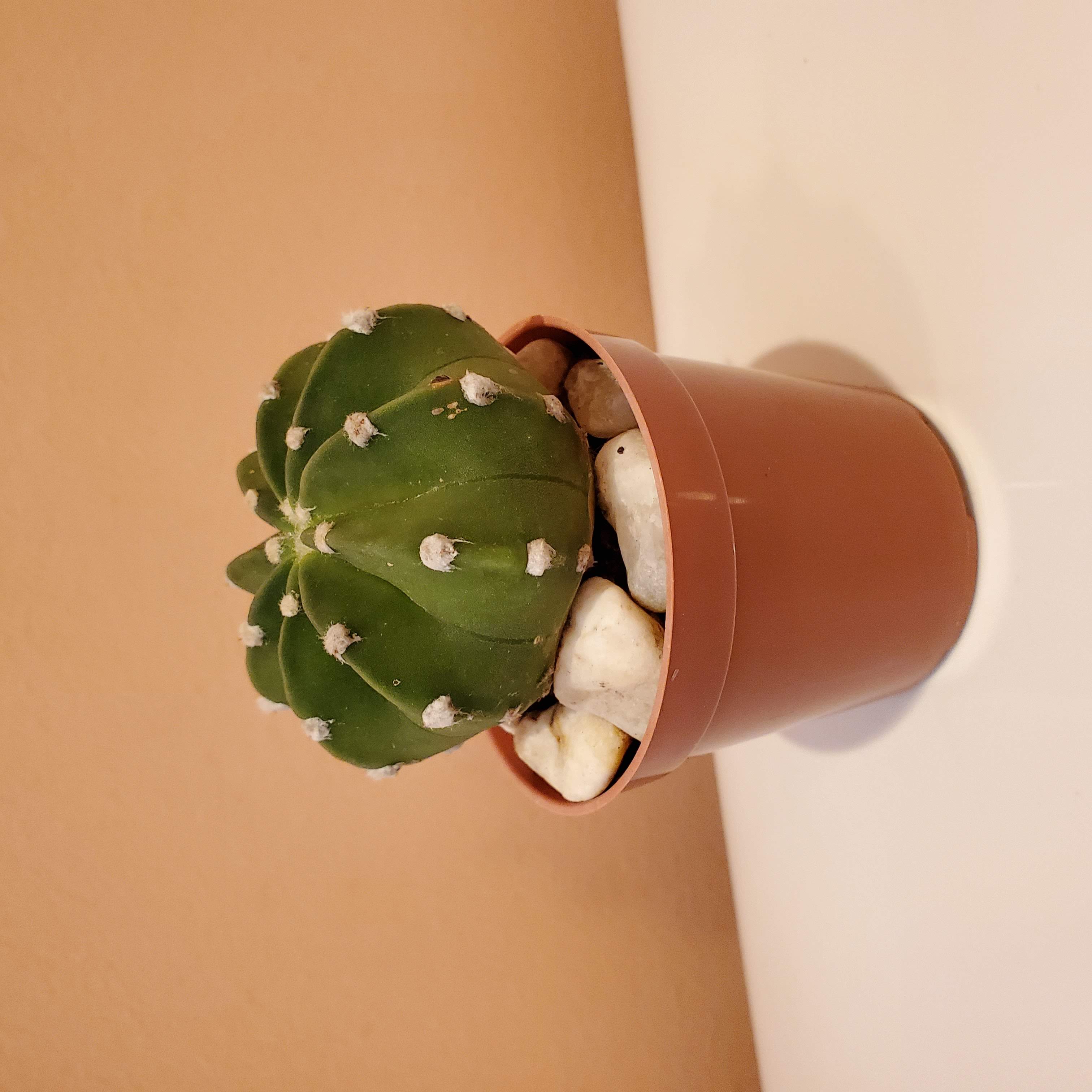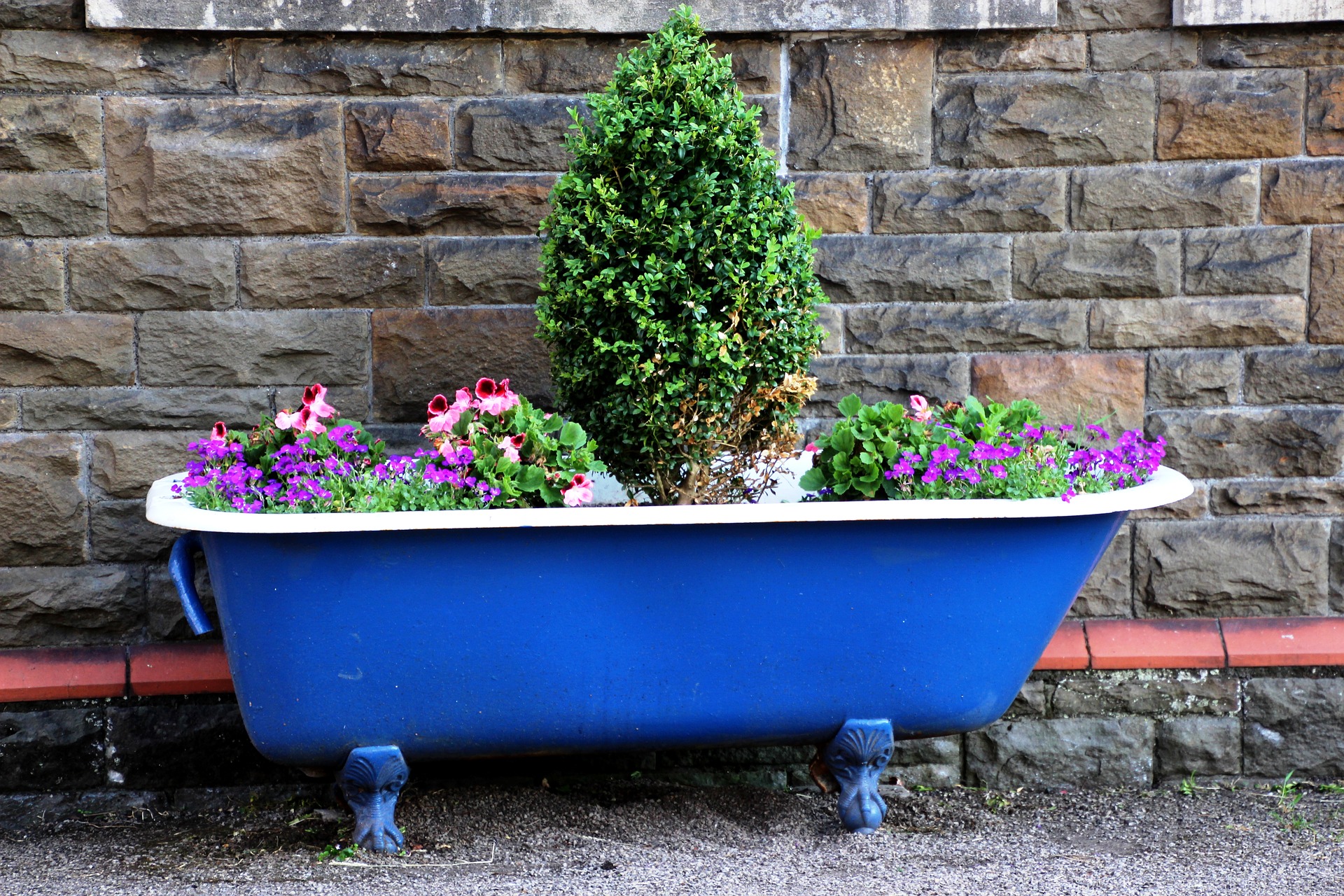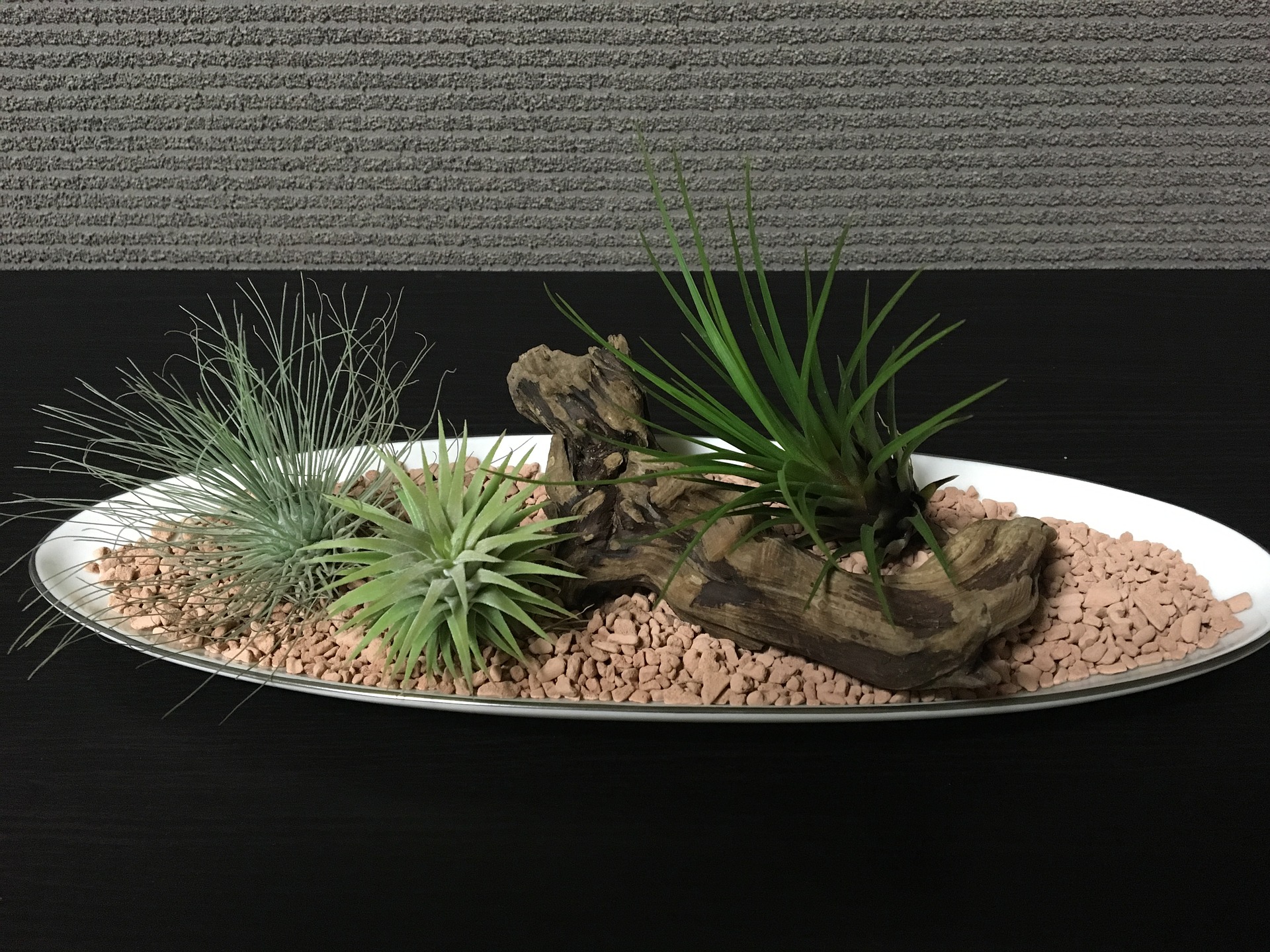- Home
- Herb Garden
Growing a Container Herb Garden
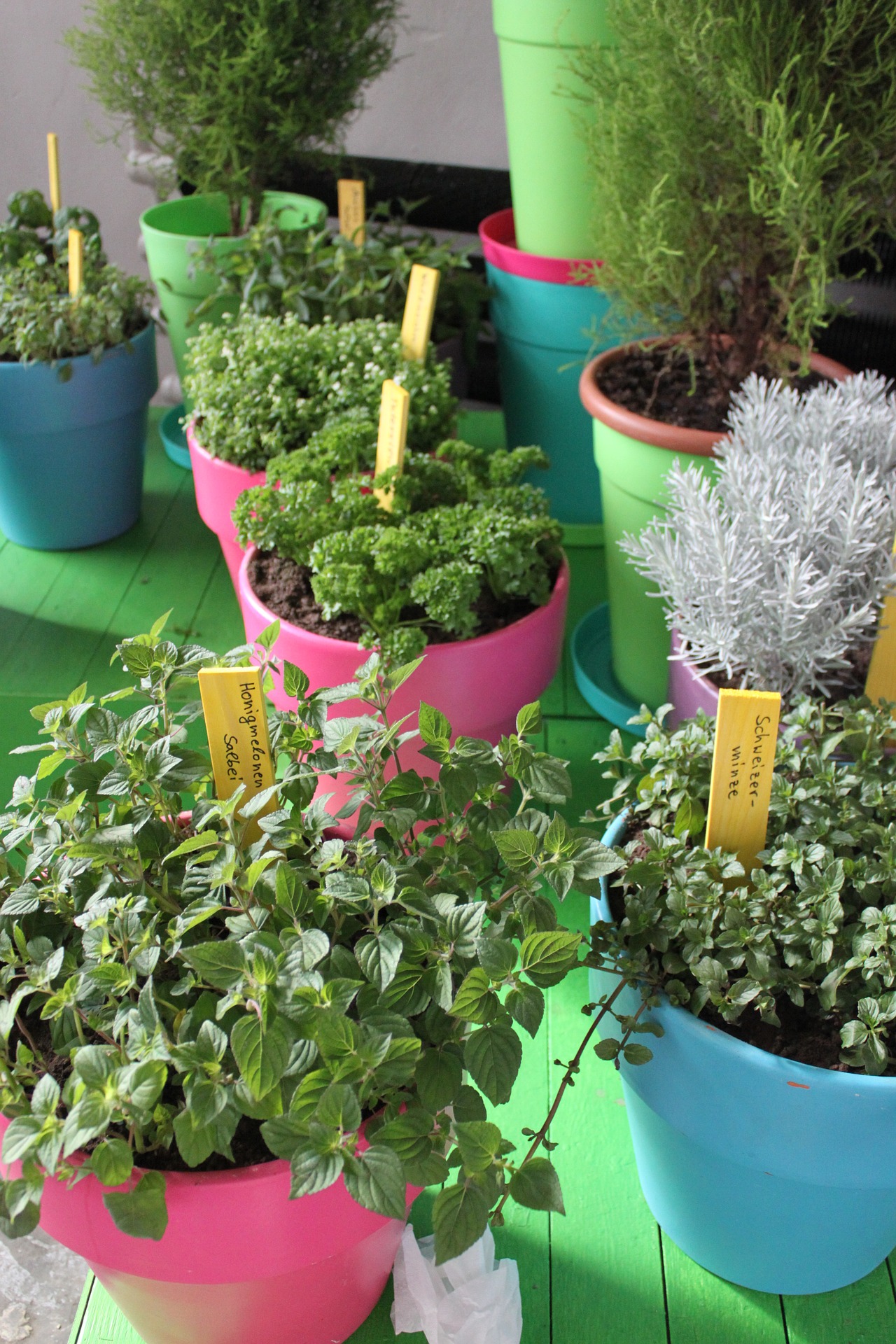
A container herb garden can satisfy all the senses with beautiful aromas, a variety of textures and colors, and culinary enjoyment.
How do you make a herb container garden?
There are many varieties of herbs that you could choose for your container garden, including thyme, basil, chives, oregano, rosemary, parsley, tarragon, cilantro, or mint.
Keep reading for guidelines for growing container herbs, whether on your kitchen counter or outside on your patio or balcony. And also check out these 11 top tips for growing herbs in pots.
Benefits of Growing Herbs in Containers
Although you can plant herbs directly in the ground in your back yard, there are many benefits to planting them in pots:
More Portable
- You can bring the herbs inside when weather gets cold.
- You can move them to where you need them (for example, when cooking) and then move them outside to give them more sun.
Easy to Maintain
- You can grow herbs with different water or sunlight needs in different pots.
- Reduces problems from wildlife eating your herbs, or weeds overtaking them.
Simple to Replace
- It is easy to replace herbs that die or get overgrown.
Convenient to Access
- Herbs in pots can be placed on your patio or porch for easy access when you need to clip some for cooking.
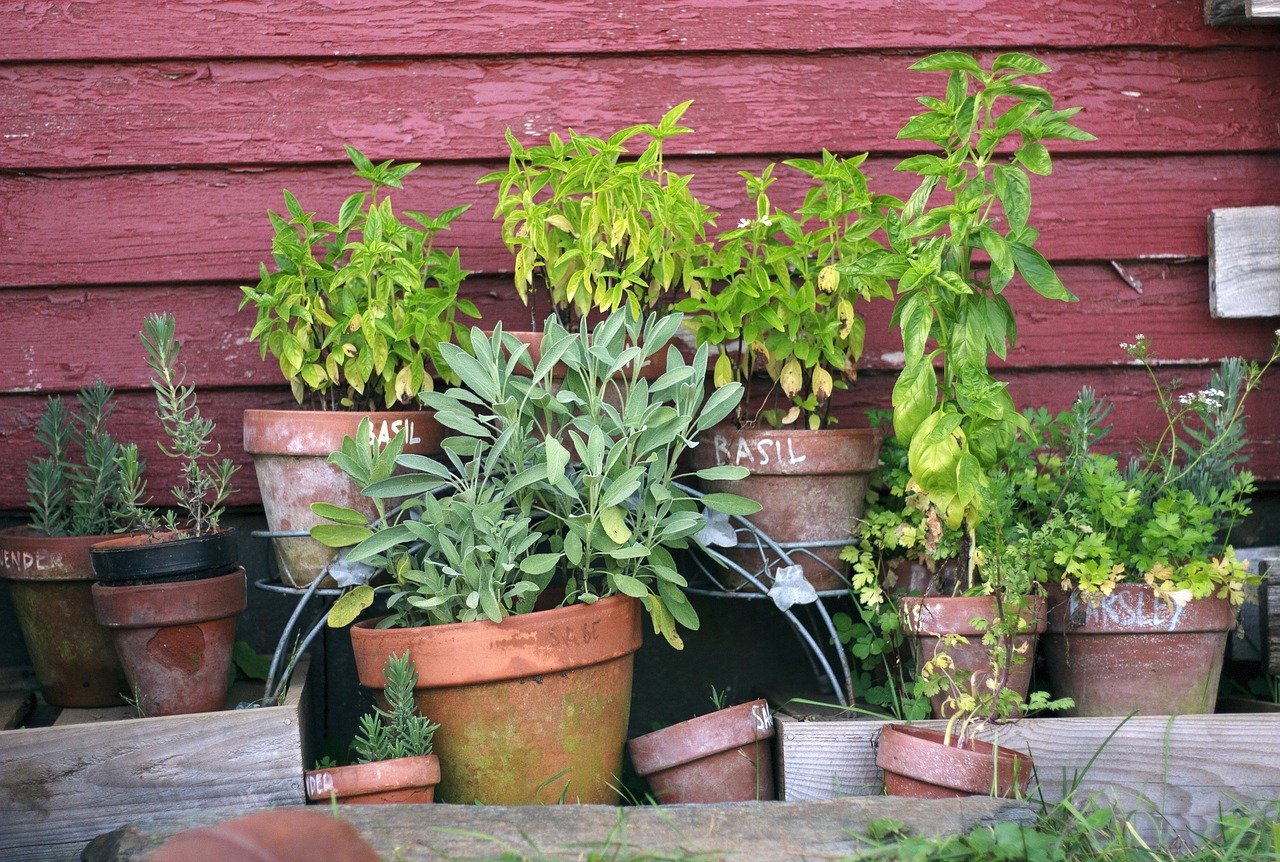
Tips for an Indoor Herb Garden
Growing herbs indoors can be very convenient when you're using them for cooking. Pots of herbs on your kitchen counter can easily be clipped to add to any recipe when you need them.
If you're growing your container herb garden inside, make sure to provide them with plenty of sunlight (or a grow light). In the winter, when it is usually very dry inside, it's also a good idea to mist them regularly. Moisture-loving herbs like parsley and mint will also need very regular watering, or you can use a self-watering pot for your herbs.
Hydroponic Herb Garden
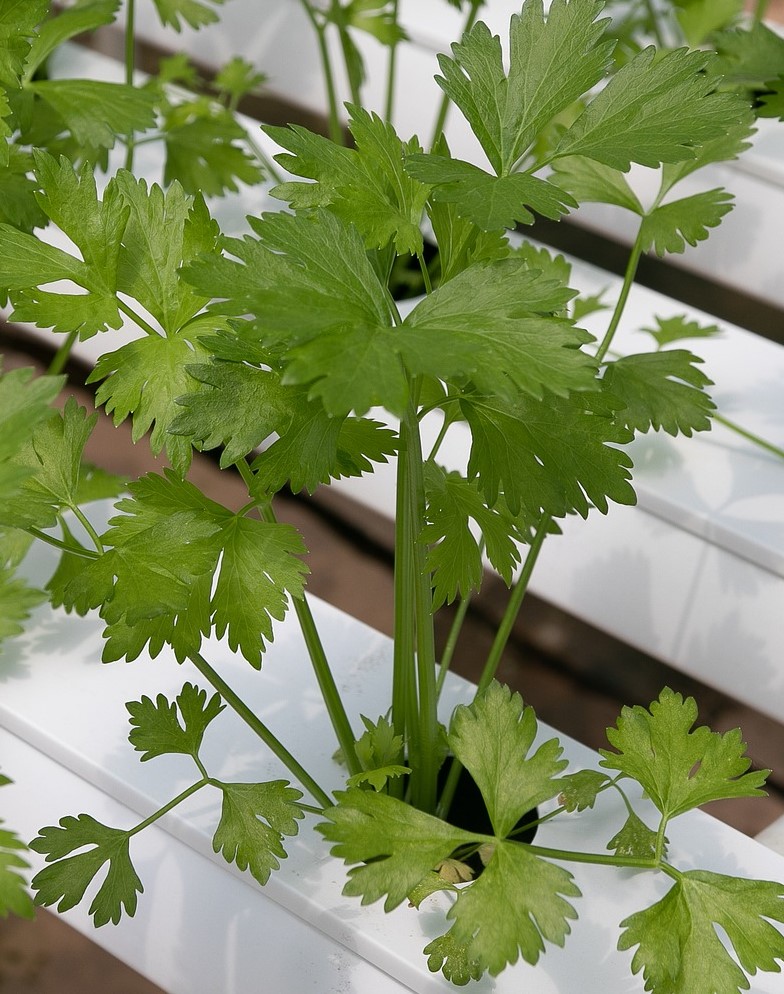
With a hydroponic herb garden, you grow the herbs directly in water and you don't need to use any potting soil at all.
You can find hydroponic setups online or in garden centers that you can use for herbs.
Using a Herb Garden Kit
A kit can be a great container herb garden for beginners, or for anyone that wants an easy, quick way to grow herbs in pots.
You can often find container herb garden kits in your local garden center, big box retailer, or online. Garden centers will also often sell pre-planted herb containers with a variety of herbs ready to go.
Planning your Herb Garden in a Pot
Container Herb Garden Layout
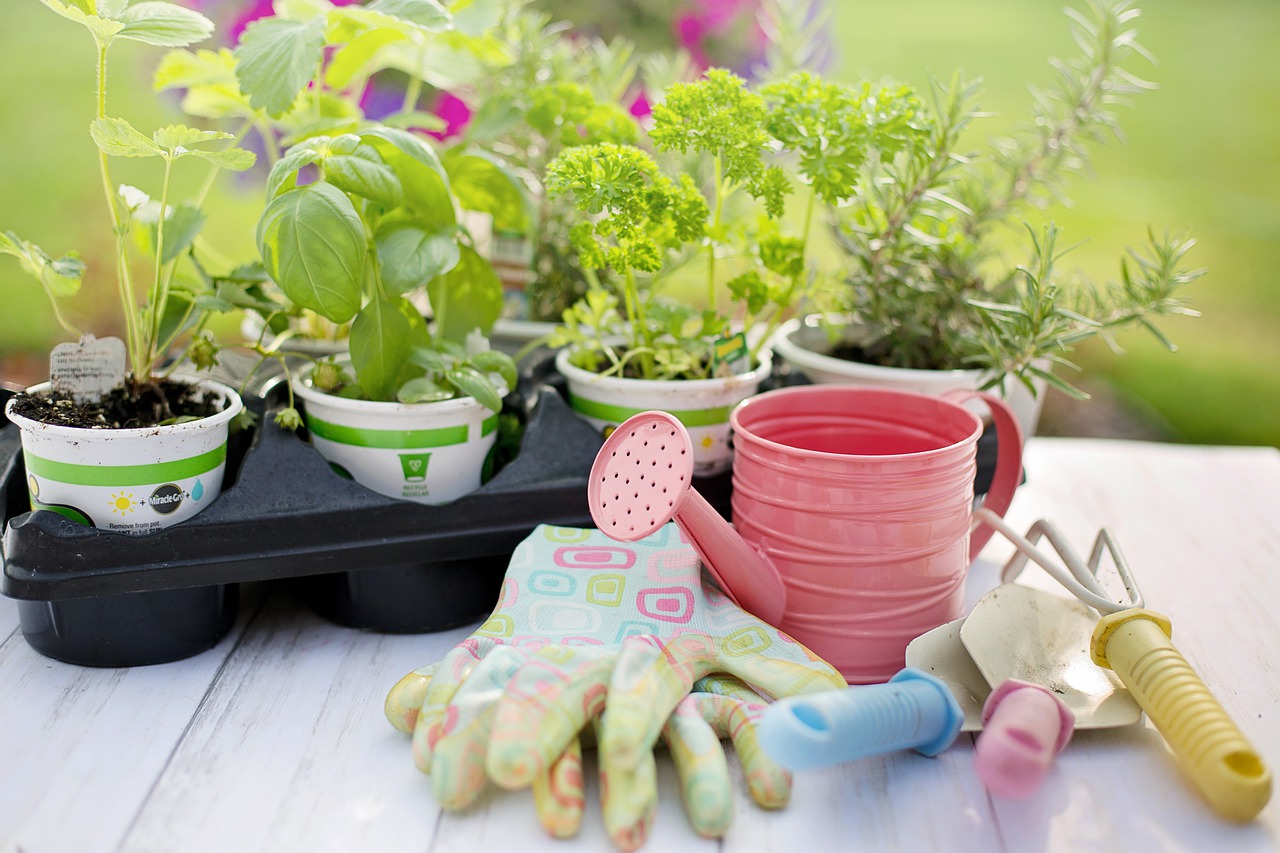
Take some time to plan your container herb garden, and pull together the items you will need:
- potted herbs,
- container,
- watering can,
- gardening gloves and tools.
First, decide on the location for your herb garden. If possible, choose a spot that will get at least 4 to 6 hours of sunlight, or use a grow light.
Second, select the container that you will use to plant your herbs.
Third, fill the container with good quality potting soil, and make sure it has drainage holes.
Fourth, choose the herbs you want to use, decide on how to lay them out in the pot, and plant them. Add labels if desired.
Fifth, harvest your herbs! Most herb plants do best with frequent harvesting of just the tips of the branches (rather than cutting off a whole branch, or cutting the entire bunch at once). This encourages the plant to grow more, reduces growth of flower buds (which take energy away from the herb leaves and usually reduce the flavor), and makes the plant bushier rather than tall and lanky.
Container Herb Garden Combinations
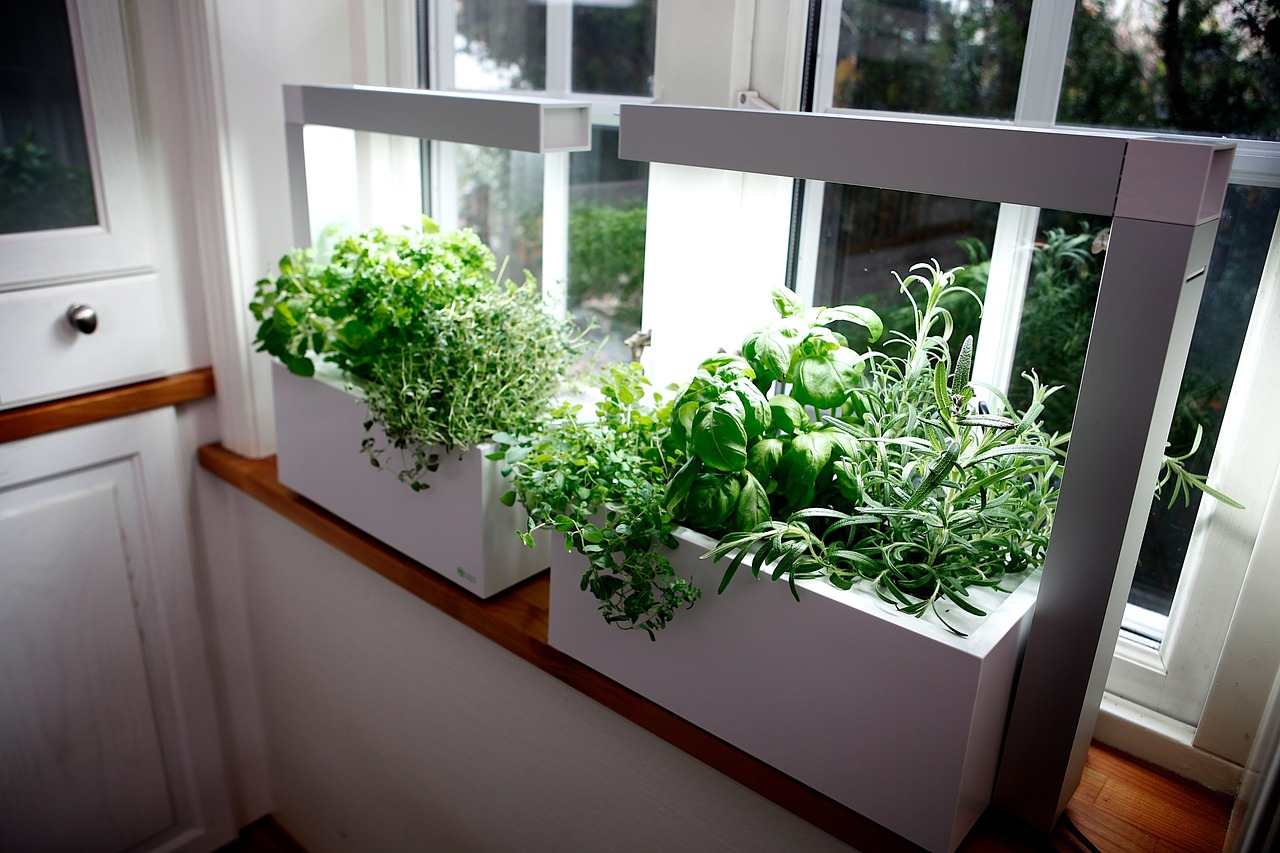
Which herbs can be potted together?
Choosing which herbs to plant together can be a challenge. Generally, you want to group them according to similar water and sunlight needs. So for example, you might not want to plant rosemary and parsley in the same container - rosemary likes hot and dry, while parsley enjoys plenty of moisture.
You can also pair herbs in the same container with flowering annuals for a beautiful combination. Even better, select edible flowers such as nasturtiums or pansies.
These are some good container herb garden combinations:
- Moisture-loving herb garden (can take a bit more shade than the others): Parsley, chives, cilantro and mint.
- Herbs for a dry sunny spot: sage, rosemary, oregano, thyme, and lavender (be careful about overwatering these)
- Warm, sunny container with frequent watering: basil, marjoram, tarragon
- Spreading herbs: mint (spearmint, chocolate mint, peppermint), lemon balm.
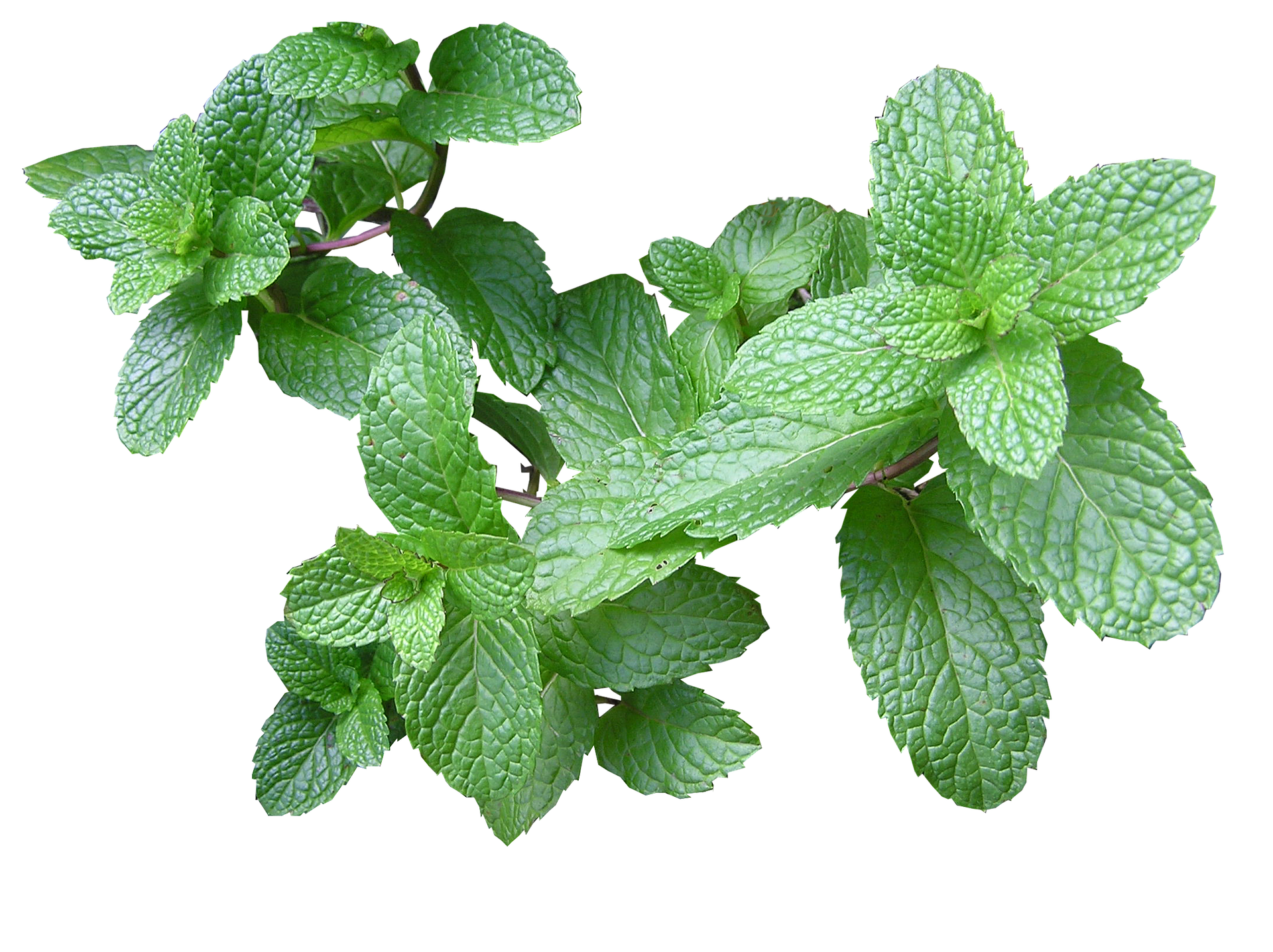
If you grow mint (or lemon balm, which is in the same family) in a container, realize that these are aggressive spreading plants.
Mint is quite likely to eventually take over whatever container (or garden) it is planted in, so if you don't want that then you can plant mint in its own pot. You can even combine different types of mint in a single pot.
The great thing about growing herbs in pots is that they are easy to change out and move around. So experiment with different combinations of herbs, and different container locations, to see what works best in your environment and for your needs.
Types of Container Herb Garden
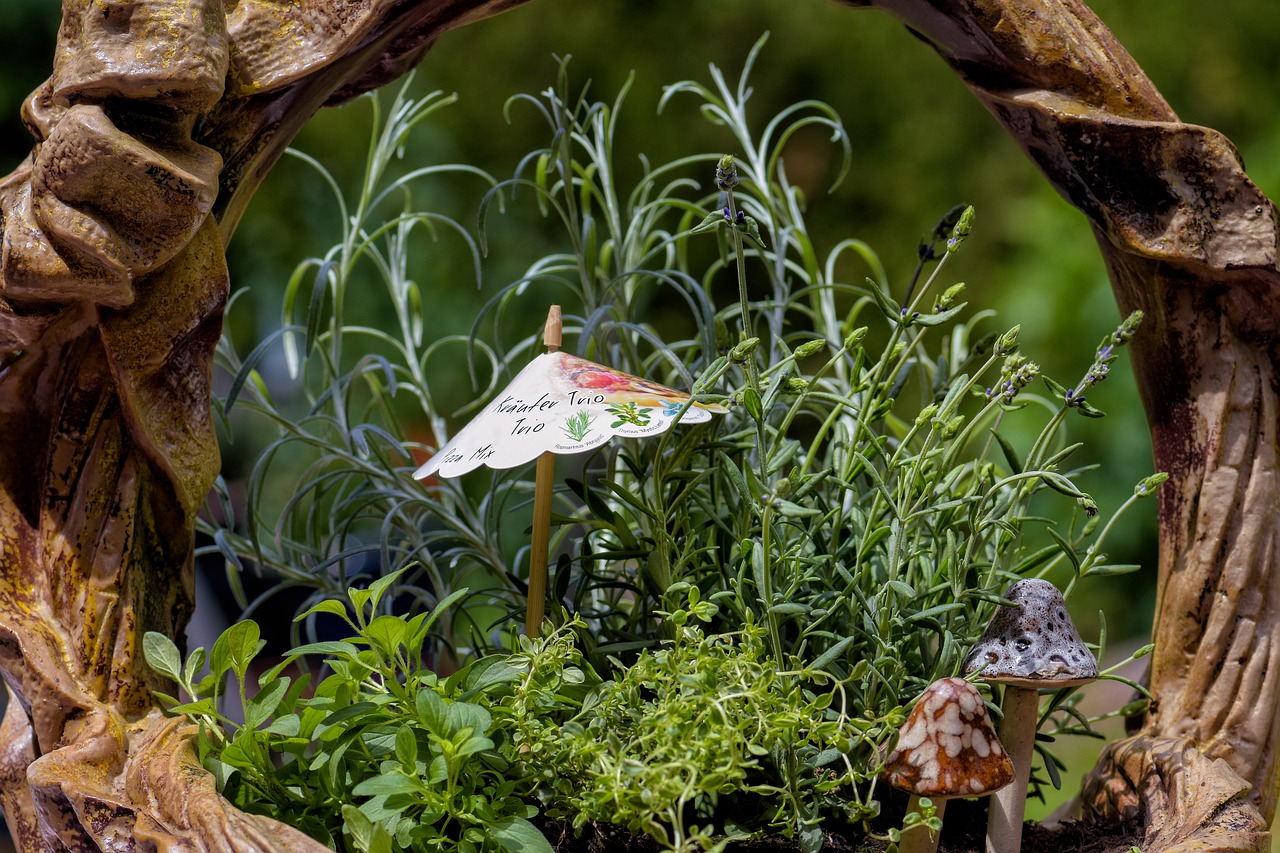
There are many types of herb gardens that you can grow in pots. Which one you choose will depend on the space you have available to grow herbs, and which herbs you prefer to grow for your kitchen use.
Herb gardens don't have to be purely functional. For example, you can use herbs in a miniature fairy garden like in this image.
These are just some possible container herb garden options:
- indoor herb garden,
- outdoor herb pots in your backyard, balcony, deck, patio or porch,
- modern herb containers,
- self-watering herb containers,
- tiny herb gardens for small spaces,
- herb fairy garden,
- vertical herb gardens, stacked or on the wall.
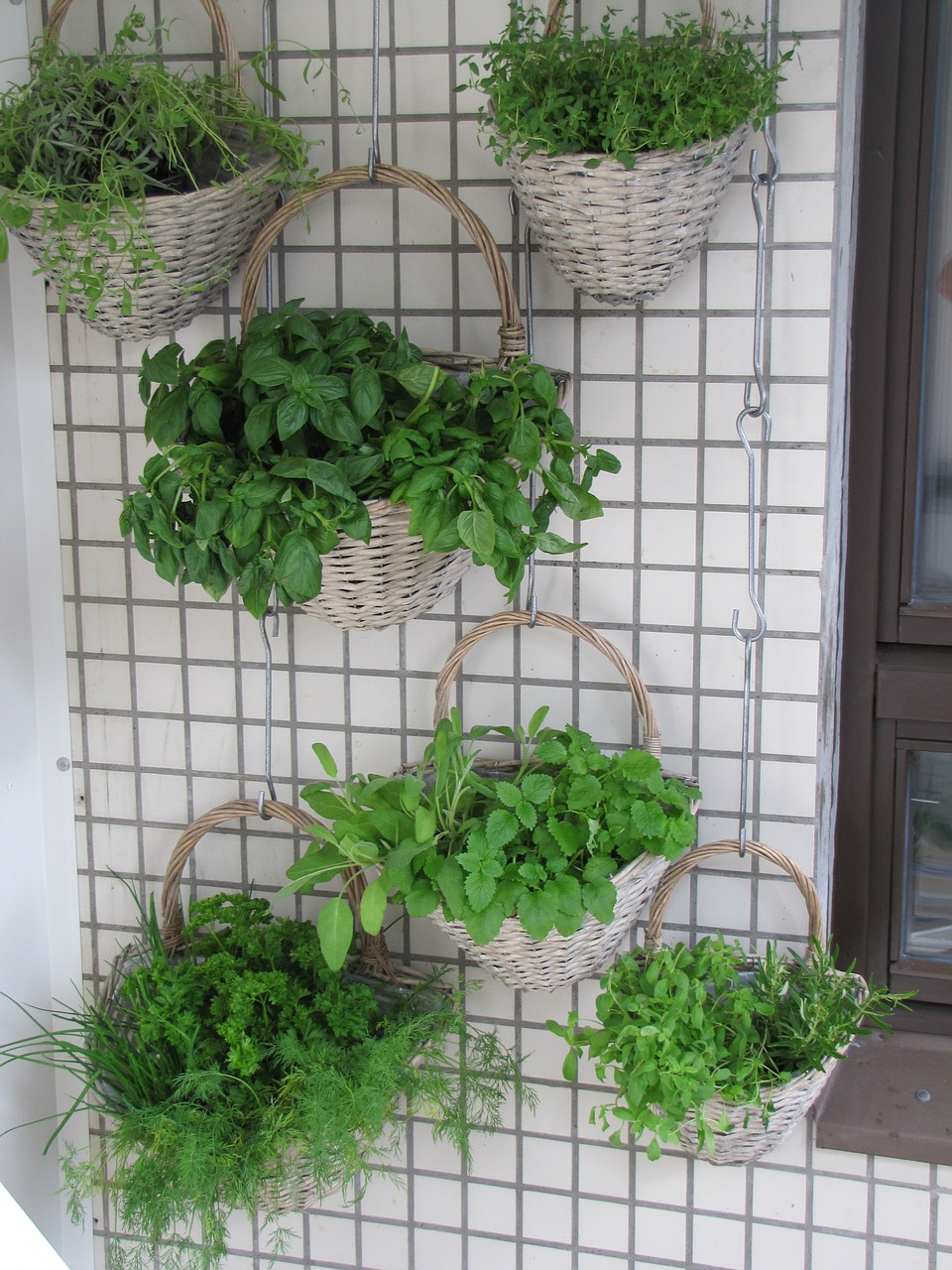
Container Herb Garden Questions
What is the best container size for herbs?
Most herbs don't have large root systems, so they will do well in any size of container. Small pots will need more frequent watering. Larger pots are great to use for combination plantings of several herbs in one container. It is better to use wider pots rather than too deep, since most herbs do not grow very deep roots.
What herbs can grow in small pots?
In very small pots, you may do best with herbs that stay fairly small and don't mind the soil drying out between watering. Thyme can be a good choice for a small pot. Alternatively, you can use small pots to sprout herb seeds, and use them as sprouts in salads or as a garnish on food.
What are some tips for growing herbs in pots for beginners?
If you're a beginner gardener, then it is best to plant each type of herb in its own pot, and choose medium-size containers that will be easier to maintain (small pots require too frequent watering, and large pots will stay wet for too long).
Here are some more tips for growing herbs in pots.
What are some good growing herbs in pots outside tips?
Most herbs will not over-winter in northern climates, so if you have your herbs in pots outside, you will either need to replant them each spring, or bring them inside for the winter. Also, choose a sunny spot for your outside herb pots - this will help them grow well. In the shade, most herbs will grow long and leggy and may die completely.
What can I do with my herbs from the garden?
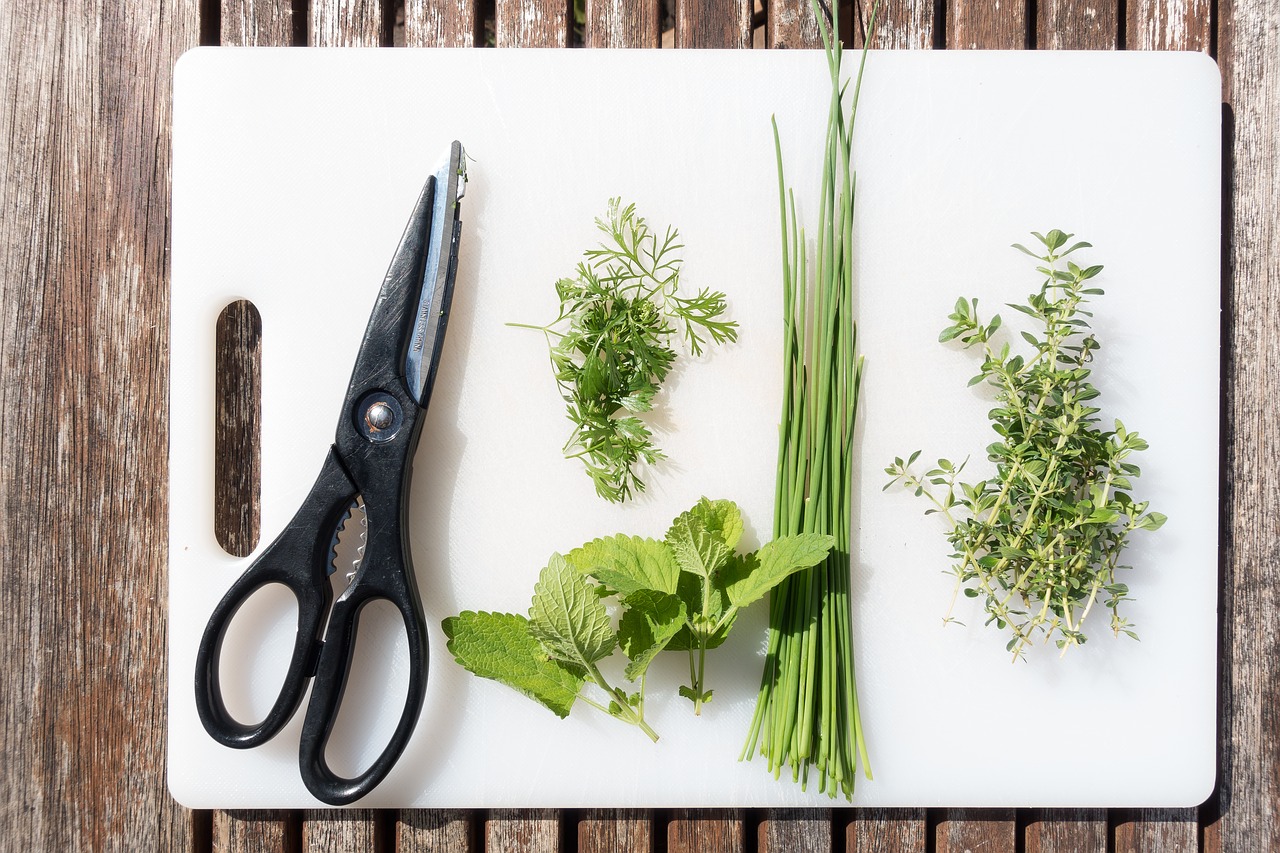
The obvious answer is to use them in cooking. You can use fresh herbs in any recipe that calls for dry herbs - just multiply the amount by three or four (because dry herbs are more concentrated).
You don't have to pick your herbs all at once. Just clip as much as you need with a pair of scissors.
Use fresh herbs in place of greens for salads, make a herb omelette, or add to sauces.
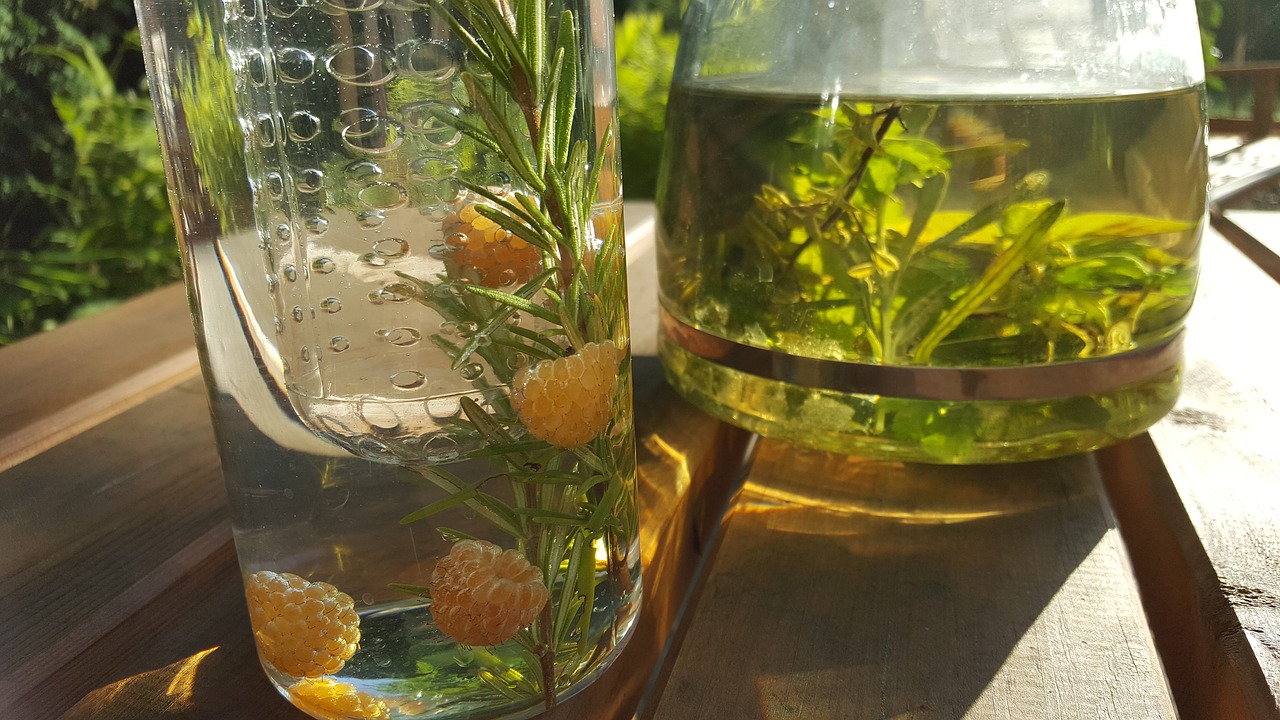
If you have more herbs than you can use at one time, you can also chop them up and freeze in an ice cube tray with a little bit of water. You can also add herb branches to vases for an aromatic green arrangement, make tea, or use them to infuse oil or vinegar.
Next, you can read these 11 top tips for growing herbs in pots.
Want to explore other ideas for gardens in pots? Learn how to grow a cactus garden container.
- Home
- Herb Garden
